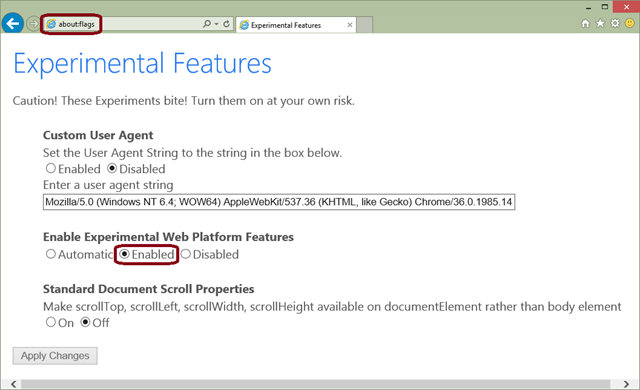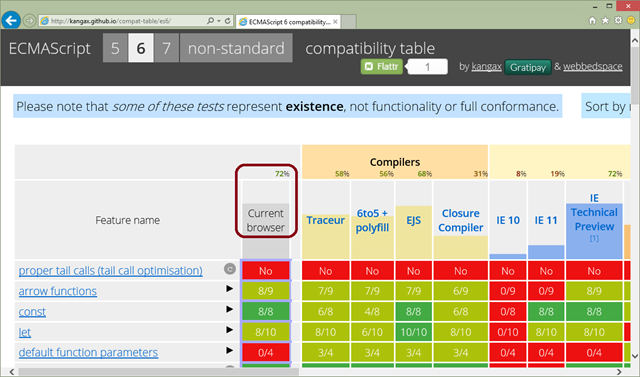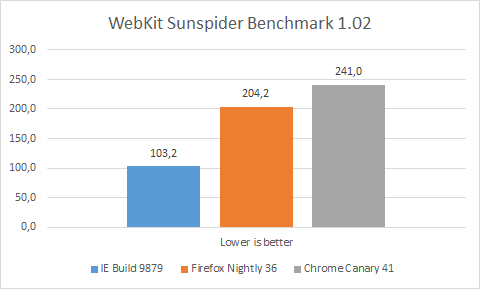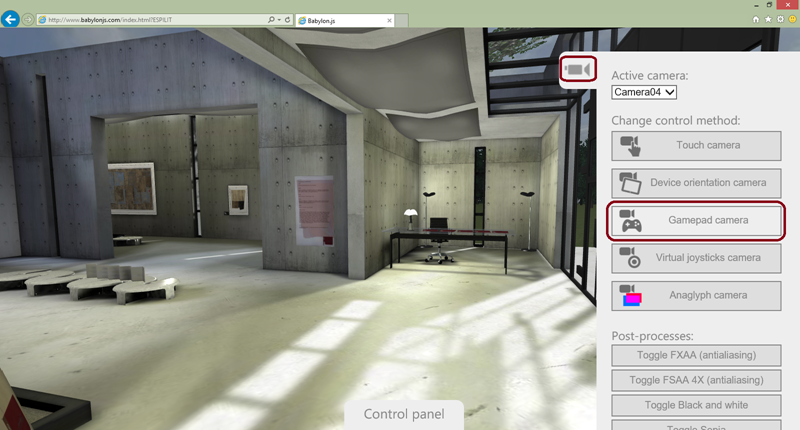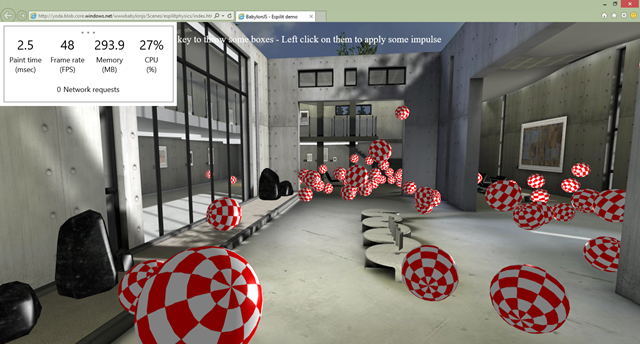Web Developers: enable & test the Internet Explorer Edge mode and discover the awesome ECMAScript 6 & performance boost we’ve made!
The Internet Explorer product team has done awesome progresses around the ECMAScript 6 support & JavaScript performance enhancements via the recent published Build 9879 of Windows 10 Technical Preview. It contains the latest engine of Internet Explorer, named the Edge mode: Living on the Edge – our next step in helping the web just work.
Moreover, if you’re a JavaScript developer, you definitely should have a look to this very detailed & technical article: Announcing key advances to JavaScript performance in Windows 10 Technical Preview explaining the architecture choices we’ve made.
How to test this updated version? You’ve got several options:
1 – Install Windows 10 Technical Preview Build 9879 on your PC (or update it to this version if you’re already running it). You can download the ISO here: https://windows.microsoft.com/en-us/windows/preview-iso. It’s the best option if you’d like to check the performance of our latest JavaScript Chakra engine or our WebGL renderer.
2 - Test it from your Windows, Mac, Android or iOS device thanks to Remote IE : https://remote.modern.ie. It uses Azure RemoteApp to test your site on IE on Windows 10 Technical Preview from anywhere. But don’t test the performance that way as you’re running inside a remote virtual machine. Still, it’s very helpful to test your web sites from any machine.
Once you’ve done that, if you’d like to really check what we’re working on for the future, you need to enable the Edge mode of Internet Explorer.
For that, simply type “about:flags” in the address bar and enable the Experimental Web Platform Features:
Internet Explorer has the best ECMAScript 6 support to date!
Did you know that? Once you’ve enabled the Edge / Experimental Web Platform Features, navigate to: https://kangax.github.io/compat-table/es6/ and check the results. IE has currently a 72% support level. For instance, Chrome Canary 41 has 40% and Firefox Nightly 36.0a1 (2014-11-25) has 67%.
If you’d like to know more about these ECMAScript 6 Features, check the according part of this article: Living on the Edge – our next step in helping the web just work
Webkit Sunspider 1.02 Benchmark: leading the way!
On a Lenovo X1 Carbon Core i7-3667U – 8 Go of RAM – 256 Go SSD running Windows 10 Technical Preview 9879 x64.
To launch the benchmark on your machine: https://www.webkit.org/perf/sunspider-1.0.2/sunspider-1.0.2/driver.html
My results:
Details links:
- Internet Explorer Technical Preview Build 9879
- Firefox Nightly 36.0a1 (2014-11-25)
- Chrome Canary 41
IE is 2X faster than Chrome & Firefox on this benchmark.
Testing it in real life via a WebGL Gamepad enabled demo
Ok, benchmarks are cool but it’s better to enjoy all this great modern browsers performances via a “real life” scenario. For that, you can test our great Babylon.JS Espilit Demo: https://www.babylonjs.com/index.html?ESPILIT, plug a Xbox controller and switch the camera to the gamepad one:
And enjoy running a full screen FPS like game in the browser using a gamepad controller!
If you’d like to test the same 3D scene coupled with a physics engine, have a look to this article: Understanding collisions & physics by building a cool WebGL Babylon.js demo with Oimo.js . It uses a lot the WebGL renderer & the JavaScript engine.
In Internet Explorer, press “CTRL” + “SHIFT” + U to display the performance tab and monitor the CPU usage & realtime FPS:
Web browsers competition has never been so good for the web developers. All browsers vendors are currently shipping awesome piece of software. Never forget to test & benchmark your code in all browsers to guarantee the best experience for your customers.
David
